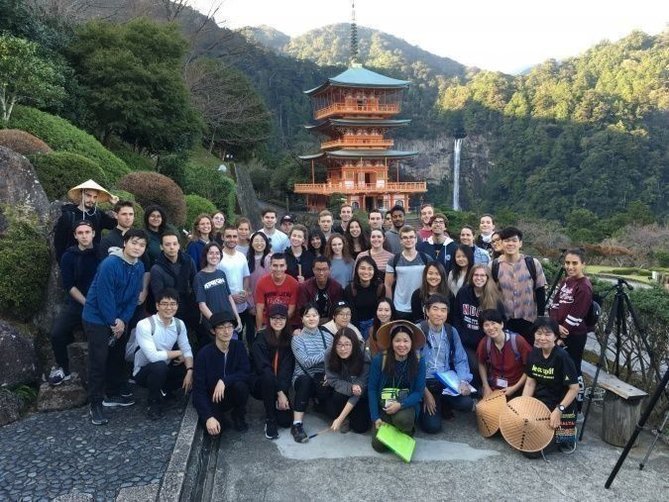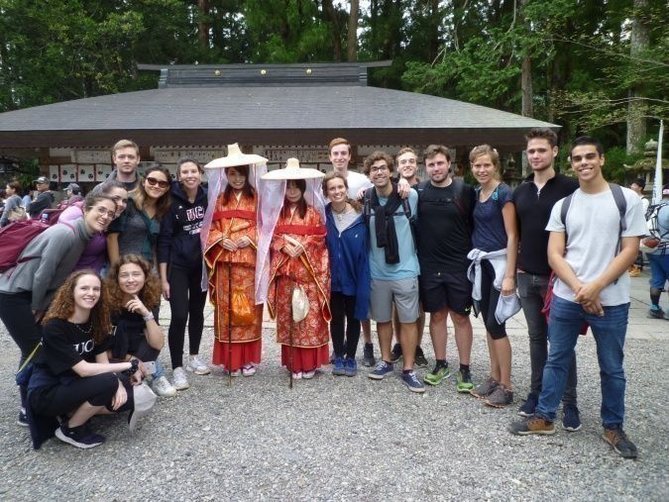NUCB organizes and subsidizes a certain number of events and activities every semester, known as the Cultural Enrichment Activities, in order to bridge the Japanese. As a tradition, cometh Autumn, our Global BBA students set forth on a journey to Kumano Kodo for an in-depth cultural discovery, and to gain a better understanding of Japanese religious beliefs while exploring the beautiful landscapes.

Kumano Kodo is one of the only 2 pilgrimage routes in the world designated as a UNESCO World Heritage site, and is located in Wakayama Prefecture. The sacred area filled with religious sites is composed of 3 main shrines: Hongu Taisha, Hayatama Taisha, and Nachi Taisha, collectively known as Kumano Sanza. For more than 10 centuries, Japanese nobles and commoners have been making the pilgrimage to the grand shrines of the region, seeking spiritual peace and the purification of their souls. This weekend, thanks to the fine weather, the students were able to bask in the sun and enjoy a therapeutic walk in the forest where Shintoism and Buddhism were harmoniously entwined.
During the walk, the guides introduced them to the history throughout the area, the appropriate way to pray in a shrine, and a traditional tool used to flatten the path and explained that the road they were walking on was actually paved by local elementary school students who came every year to maintain its pristine condition. Apart from story-telling, the guides sometimes sang traditional songs and recited the poems written on the wall to give them a taste of the culture and to instill a traditional atmosphere.

After several hours of walk, the students stayed in a Japanese Ryokan which is much more than just a place to sleep in. Fusing together elements like an onsen (Japanese hot springs), tatami floors (straw floor mats), futon beds, and local cuisines - typically called Kaiseki Ryori (Japanese full course meal), the experience provided them an opportunity to enjoy the Japanese lifestyle and hospitality.
Incorporated into the Global BBA program, the Cultural Enrichment Activities expose the students to the local community, customs, and experiences which they may not be able to ever uncover by themselves, and ultimately helps them broaden their horizons and enlarge their knowledge base.